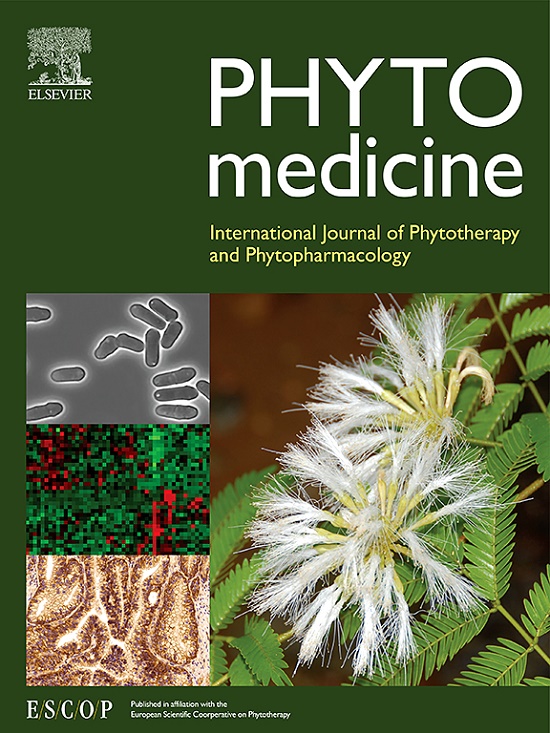Draconis Sanguis (DS) from the fruit of Daemonorops draco Bl. ameliorates cardiac function through optimizing myocardial energy metabolism by promoting angiogenesis in ischemic heart failure
IF 6.7
1区 医学
Q1 CHEMISTRY, MEDICINAL
引用次数: 0
Abstract
Backgroud
Draconis Sanguis (DS), a precious traditional Chinese medicine for activating blood and dissolving stasis, has been used in treating ischemic cardiovascular diseases. However, the underlying mechanism of DS against heart failure after myocardial ischemia (MI) remains unclear, especially concerning angiogenesis and energy metabolism, which have never been elucidated.
Purpose
This study aimed to explore the protective mechanism of DS in ischemic heart failure (IHF) from the perspectives of angiogenesis and energy metabolism.
Methods
We investigated the effects of DS on an in vivo model of IHF induced by ligation of the left anterior descending coronary artery (LADCA) and an in vitro model of HUVECs injury induced by hypoxia. High-performance liquid chromatography (HPLC) was performed to identify components of DS. Echocardiography, histopathology, and cardiac enzymes analysis were used to examine the anti-ischemic heart failure effect of DS. Transcriptome sequencing, positron emission tomography (PET), HPLC, and chocardiography were performed on heart tissues to explore the underlying mechanism. Furthermore, the relevant targets were investigated by real-time quantitative PCR (RT-qPCR), Western blotting, immunohistochemistry, and immunofluorescence. Finally, potential pharmacodynamic substances were identified with a cell model and molecular docking.
Results
The results showed DS increased survival of rats with IHF for 28 days by 10 %, significantly ameliorated cardiac function in rats with IHF, increased left ventricular ejection fraction by 20 %, and it reduced pathological changes and cardiac enzymes levels. These results indicated that DS alleviated myocardial ischaemia injury. The effects described above were related to the regulation of the HIF-1α/VEGF signallings pathway to promote angiogenesis in the ischemic myocardium, increase the local oxygen supply and optimize myocardial energy metabolism "promoting lipid and inhibiting glucose" and increasing local ATP production. Moreover, DS compounds were identified; these compounds protected HUVECs from hypoxia and glucose deprivation, significantly upregulated HIF-1α gene expression, and were shown to be related to this mechanism in vitro experiments.
Conclusions
DS ameliorates cardiac function by optimizing myocardial energy metabolism after promoting angiogenesis via HIF-1α/VEGF signalling pathway regulation.
求助全文
约1分钟内获得全文
求助全文
来源期刊

Phytomedicine
医学-药学
CiteScore
10.30
自引率
5.10%
发文量
670
审稿时长
91 days
期刊介绍:
Phytomedicine is a therapy-oriented journal that publishes innovative studies on the efficacy, safety, quality, and mechanisms of action of specified plant extracts, phytopharmaceuticals, and their isolated constituents. This includes clinical, pharmacological, pharmacokinetic, and toxicological studies of herbal medicinal products, preparations, and purified compounds with defined and consistent quality, ensuring reproducible pharmacological activity. Founded in 1994, Phytomedicine aims to focus and stimulate research in this field and establish internationally accepted scientific standards for pharmacological studies, proof of clinical efficacy, and safety of phytomedicines.
 求助内容:
求助内容: 应助结果提醒方式:
应助结果提醒方式:


